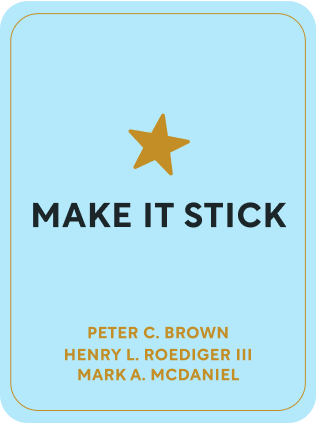

This article is an excerpt from the Shortform book guide to "Make It Stick" by Peter C. Brown, Henry L. Roediger III, Mark A. McDaniel. Shortform has the world's best summaries and analyses of books you should be reading.
Like this article? Sign up for a free trial here .
What is interleaved practice? How does it compare to mass practice? Which method is more effective and why?
Interleaved practice is a study technique where you alternate between several topics or skills, instead of focusing on one thing at a time. Although it may seem counterproductive to study this way, interleaved practice is actually more effective than massed practice because it boosts retention and emulates real life—where you’ll encounter situations that require a mix of different skills and knowledge.
Keep reading to learn about interleaved practice and why it’s more effective than mass practice.
Interleaved Practice
Interleaving is mixing up your practice among multiple related topics or skills. Interleaved practice improves your comprehension and retention in two ways:
- Switching among different topics naturally spaces out your practice in any one area.
- Changing your focus among related topics helps you make connections among them, which deepens your understanding of each subject.
The key to interleaving is to switch to the next skill or concept before you’ve finished practicing one. It feels counterintuitive and frustrating to switch gears before you’re ready, which is why teachers and students often resist interleaving.
In fact, in contrast to the momentary strength you get from massed practice, interleaving actually hinders your performance while you’re learning the material. However, in the long term, this method still results in better retention.
In one study, college students learned how to calculate the volumes of four geometric shapes. One group of students solved practice problems that were grouped by the shape, while the other group of students solved an interleaved set of practice problems. That day, students doing massed practice performed better, averaging 89% correct answers, compared to 60% among students who did interleaved practice. However, on a test the following week, the students who’d done interleaved practice averaged 63% correct, whereas the other group dropped to 20%.
(Shortform note: Although the interleaved group improved slightly, while the massed practice group dropped drastically, the interleaved group never performed at a level close to the massed practice group’s initial work. The book doesn’t address how the interleaved group could have raised its score overall—perhaps simply by doing more interleaved practice.)
Interleaving simulates and better prepares you for the final test—and real life—where you’ll encounter situations that require a mix of different skills and knowledge.
Interleaved Practice Improves Your Discrimination
Interleaved practice strengthens your conceptual knowledge of the underlying principles, as opposed to a simple surface-level understanding of facts and figures.
The conceptual knowledge you gain through this method improves your ability to discriminate, or determine what knowledge or which skill you need in various situations. This is a crucial aspect of using what you learn in real-life situations.
In one experiment, researchers asked participants to study several artists’ paintings so that they could look at a piece of art and be able to identify the painter. Some participants used massed practice, studying each artist extensively before moving onto the next, while others used interleaving and switched among different artists.
Interleaving helped participants see the differences among different artists’ works, as opposed to the commonalities in each individual artist’s works. That ability to discriminate helped them identify who’d painted not only the paintings they’d studied, but also paintings they’d never seen before.

———End of Preview———
Like what you just read? Read the rest of the world's best book summary and analysis of Peter C. Brown, Henry L. Roediger III, Mark A. McDaniel's "Make It Stick" at Shortform .
Here's what you'll find in our full Make It Stick summary :
- How to understand and remember what you learn
- How a little forgetting helps you remember
- Why you’re not a good judge of how much you know






